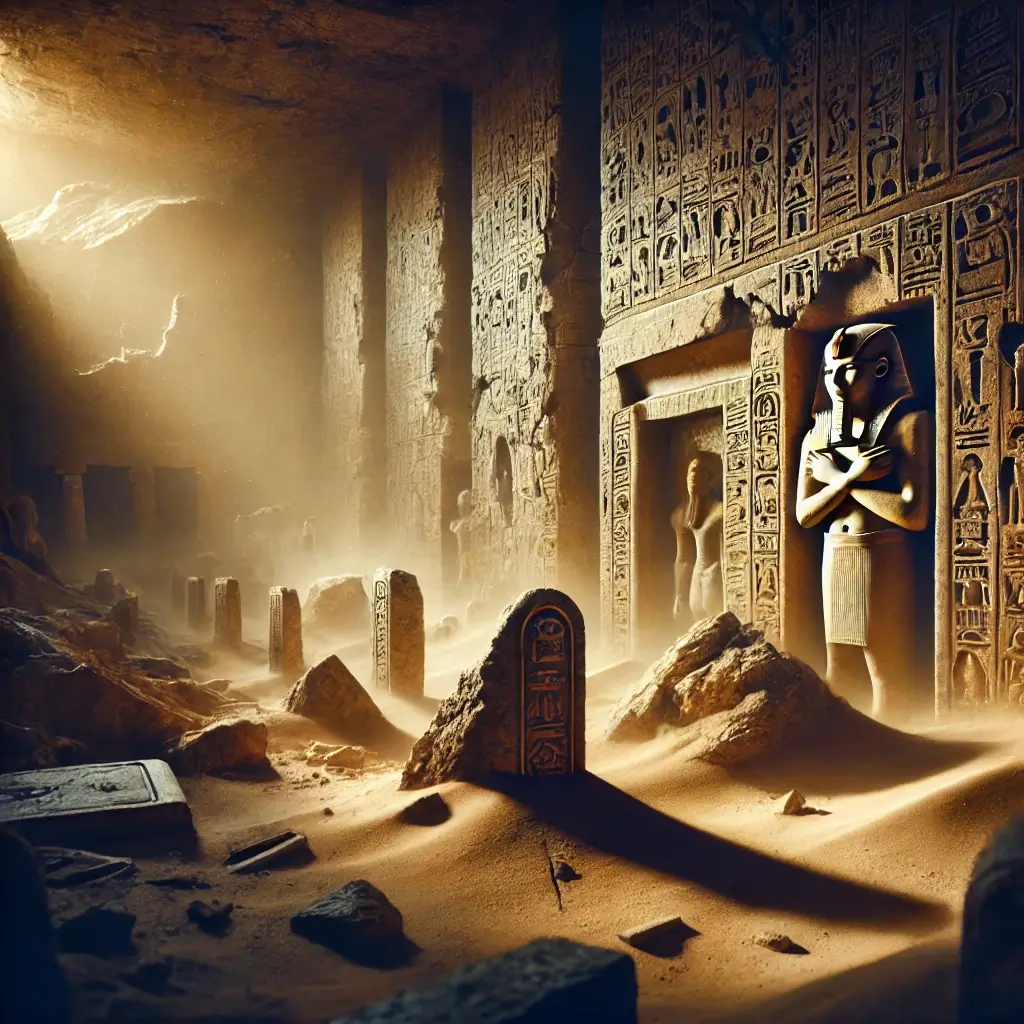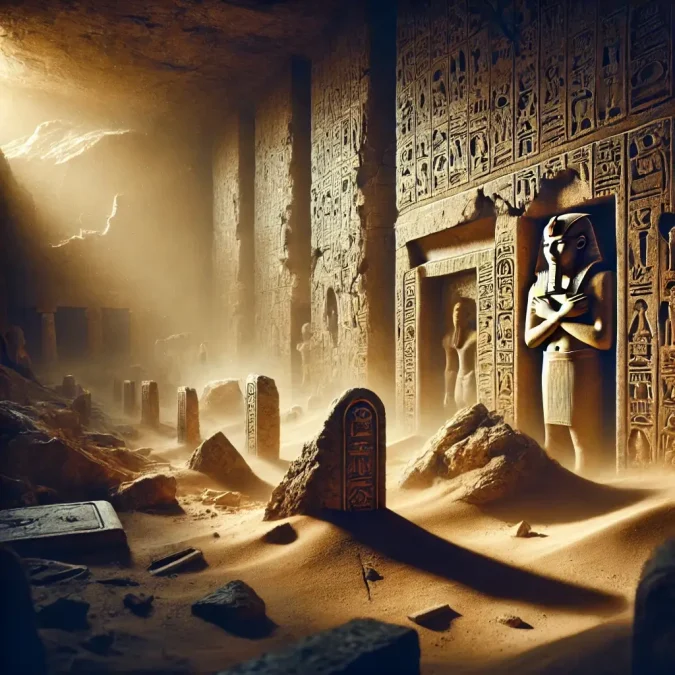
The Seventh Dynasty of ancient Egypt is one of the most enigmatic periods in Egyptian history, marking the transition from the stability of the Old Kingdom to the political fragmentation of the First Intermediate Period. The early 22nd century BC was a time of significant upheaval, and the Seventh Dynasty is often considered to be the beginning of the First Intermediate Period. However, the actual existence of the Seventh Dynasty is debated, as historical records from this period are scarce and inconsistent. Some sources describe the Seventh Dynasty as a short-lived and chaotic period, while others question whether it existed at all.
The Seventh Dynasty is traditionally placed immediately after the Sixth Dynasty and before the Eighth Dynasty, but the lack of reliable historical evidence makes it difficult to determine the exact sequence of events. In this article, we will explore the historical context, the potential rulers of the Seventh Dynasty, and the challenges associated with understanding this mysterious period. We will also examine the cultural and political factors that contributed to the decline of the Old Kingdom and the onset of the First Intermediate Period.
The Historical Context of the Seventh Dynasty
The End of the Old Kingdom and the Onset of Instability
The Old Kingdom of ancient Egypt, which included the Third, Fourth, Fifth, and Sixth Dynasties, was a time of centralized power, monumental construction, and cultural prosperity. However, by the end of the Sixth Dynasty, Egypt was facing significant challenges, including economic difficulties, political instability, and social unrest. The long reign of Pepi II, the last ruler of the Sixth Dynasty, is often cited as a contributing factor to the decline of the Old Kingdom. The weakening of the central authority, combined with the growing power of regional officials, led to a gradual erosion of the pharaoh’s control over the kingdom.
The transition from the Old Kingdom to the First Intermediate Period was marked by the collapse of centralized governance and the rise of regional power centers. This period of fragmentation and instability is often described as a time of chaos and disorder, with multiple claimants to the throne and a lack of strong central leadership. The Seventh Dynasty, if it existed, would have been the first dynasty of this tumultuous period, characterized by short reigns and political uncertainty.
The Debate Over the Existence of the Seventh Dynasty
The existence of the Seventh Dynasty is a topic of debate among historians and Egyptologists. The primary source for the existence of the Seventh Dynasty is the ancient historian Manetho, who wrote about Egyptian history during the Ptolemaic period. According to Manetho, the Seventh Dynasty consisted of “seventy kings in seventy days,” suggesting a period of rapid turnover and instability. However, modern scholars question the accuracy of Manetho’s account, as there is little archaeological evidence to support the existence of such a dynasty.
Some historians believe that the Seventh Dynasty may have been a brief and chaotic period following the collapse of the Sixth Dynasty, during which multiple claimants to the throne vied for power. Others argue that the Seventh Dynasty was purely a literary invention, created to emphasize the chaos and disorder that followed the end of the Old Kingdom. Regardless of whether the Seventh Dynasty actually existed, it is clear that the early First Intermediate Period was a time of significant political upheaval and uncertainty.
The Rulers of the Seventh Dynasty
The identities of the rulers of the Seventh Dynasty are largely unknown, and there is no definitive list of kings who may have ruled during this period. Manetho’s account of “seventy kings in seventy days” suggests that the rulers of the Seventh Dynasty had extremely short reigns, which may have contributed to the lack of historical records. The following section provides a summary of the possible rulers of the Seventh Dynasty, based on the limited information available.
The Seventy Kings of Manetho
According to Manetho, the Seventh Dynasty consisted of seventy kings who ruled for a total of seventy days. This description is often interpreted as a metaphor for the rapid succession of rulers and the instability that characterized this period. The idea of seventy kings ruling in such a short time suggests that the central authority had collapsed, and multiple claimants to the throne were vying for power. However, there is no archaeological evidence to support the existence of these seventy kings, and it is possible that Manetho’s account was an exaggeration or a symbolic representation of the chaos that followed the end of the Old Kingdom.
Regional Leaders and Claimants to the Throne
During the early First Intermediate Period, the collapse of central authority led to the rise of regional leaders who claimed power in their respective territories. These regional leaders may have been among the “seventy kings” described by Manetho, as they sought to establish their own authority in the absence of a strong central government. The lack of a unified state meant that multiple individuals could claim the title of pharaoh, leading to a period of fragmentation and competing power centers.
The Possibility of Overlapping Dynasties
Some historians believe that the Seventh Dynasty may have overlapped with other dynasties, such as the Eighth Dynasty or regional dynasties that emerged in Upper and Lower Egypt. The lack of clear historical records makes it difficult to determine the exact sequence of events, and it is possible that multiple dynasties coexisted during this period, each claiming legitimacy as the true rulers of Egypt. This overlapping of dynasties would have contributed to the political instability and fragmentation that characterized the early First Intermediate Period.
The Cultural and Political Factors Contributing to the Decline
The Weakening of Central Authority
One of the primary factors contributing to the decline of the Old Kingdom and the onset of the First Intermediate Period was the weakening of central authority. The long reign of Pepi II, which is believed to have lasted over 90 years, led to a gradual erosion of the pharaoh’s power. By the end of Pepi II’s reign, the central government was no longer able to maintain control over the vast territories of Egypt, and regional officials, known as nomarchs, began to assert their independence.
The increasing power of regional officials meant that the pharaoh’s authority was diminished, and the central government struggled to collect taxes, maintain infrastructure, and enforce laws. This decline in central authority created a power vacuum, which allowed regional leaders to rise and challenge the pharaoh’s control. The result was a period of political fragmentation, during which multiple individuals claimed the title of pharaoh, leading to instability and conflict.
Economic Challenges and Climate Change
Economic challenges also played a significant role in the decline of the Old Kingdom and the onset of the First Intermediate Period. The centralized economy of the Old Kingdom relied heavily on agricultural production, and the annual flooding of the Nile was crucial for maintaining food supplies. However, evidence suggests that the Nile’s flooding may have become less predictable during the late Old Kingdom, leading to reduced agricultural yields and food shortages.
Climate change may have contributed to the decline in agricultural productivity, as changes in rainfall patterns affected the Nile’s inundation. The resulting food shortages would have led to economic difficulties, as the central government struggled to provide for the population and maintain the stability of the state. The economic challenges faced by the Old Kingdom weakened the central authority and contributed to the rise of regional power centers, which further undermined the pharaoh’s control.
The Rise of Regional Power Centers
The decline of central authority and the weakening of the pharaoh’s power led to the rise of regional power centers, as local officials and nomarchs began to assert their independence. These regional leaders were often able to maintain control over their territories and collect taxes, which allowed them to build their own power bases. The rise of regional power centers contributed to the fragmentation of Egypt, as multiple leaders claimed authority over different parts of the country.
The rise of regional power centers also led to competition and conflict between different regions, as each leader sought to expand their influence and control. This period of fragmentation and competing power centers is often described as a time of chaos and disorder, as the lack of a strong central government meant that there was no unified authority to maintain order and stability. The result was a period of political instability, during which the authority of the pharaoh was challenged, and the unity of Egypt was undermined.
The Onset of the First Intermediate Period
The Seventh Dynasty, whether it existed or not, marks the beginning of the First Intermediate Period, a time of political fragmentation and regional conflict. The collapse of the Old Kingdom and the rise of regional power centers led to a period of instability, during which multiple individuals claimed the title of pharaoh, and the unity of Egypt was shattered. The First Intermediate Period is often described as a “dark age” in Egyptian history, characterized by a lack of strong central leadership and the decline of cultural and architectural achievements.
Despite the challenges of the First Intermediate Period, it was also a time of significant cultural and social change. The rise of regional power centers meant that local leaders were able to assert their independence and build their own power bases, leading to the development of regional cultures and traditions. The First Intermediate Period also saw the emergence of new forms of literature, art, and religious practices, as regional leaders sought to establish their own legitimacy and authority.
Conclusion
The Seventh Dynasty of ancient Egypt is one of the most mysterious and debated periods in Egyptian history, marking the transition from the stability of the Old Kingdom to the political fragmentation of the First Intermediate Period. The lack of reliable historical records makes it difficult to determine whether the Seventh Dynasty actually existed, or whether it was a literary invention created to emphasize the chaos and disorder that followed the end of the Old Kingdom. Regardless of its existence, the Seventh Dynasty represents a time of significant political upheaval and uncertainty, as Egypt transitioned from a centralized state to a fragmented and divided society.
The decline of the Old Kingdom and the onset of the First Intermediate Period were driven by a combination of factors, including the weakening of central authority, economic challenges, climate change, and the rise of regional power centers. The result was a period of political instability, during which multiple individuals claimed the title of pharaoh, and the unity of Egypt was undermined. Despite the challenges of this period, the First Intermediate Period also saw the emergence of new cultural and social developments, which would lay the foundation for the reunification of Egypt and the rise of the Middle Kingdom.
